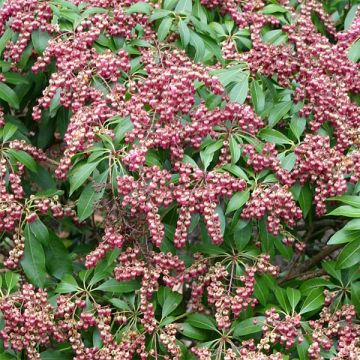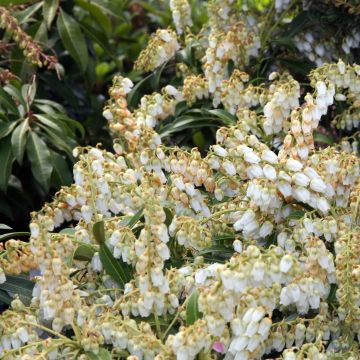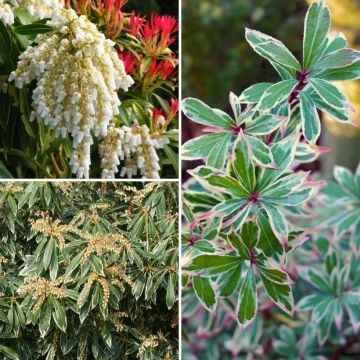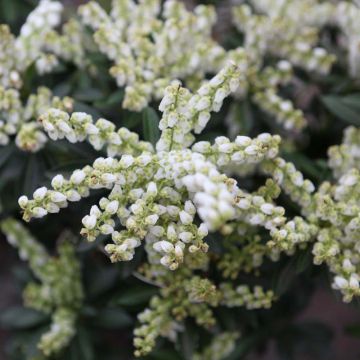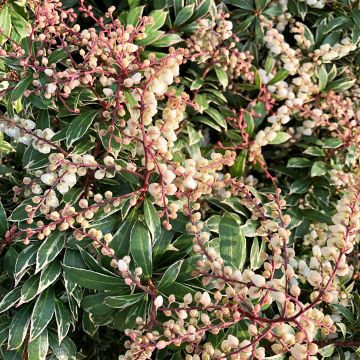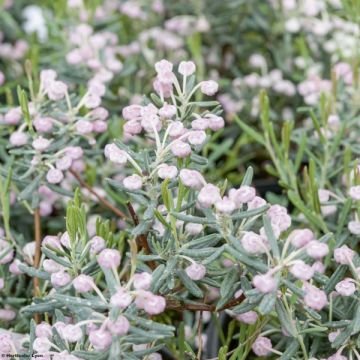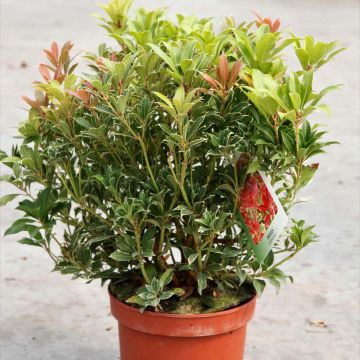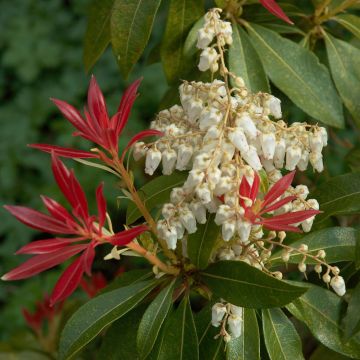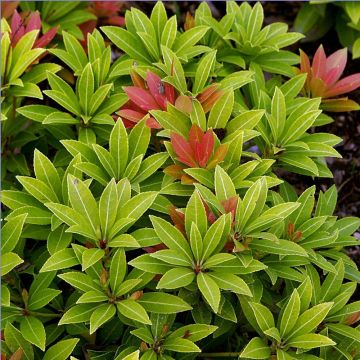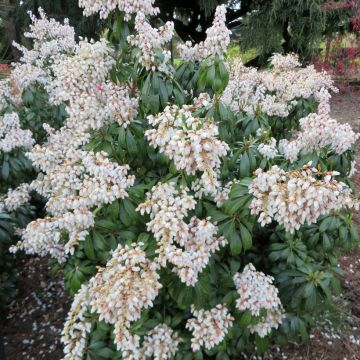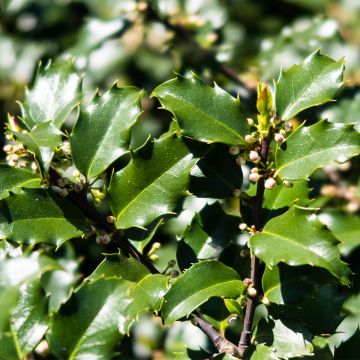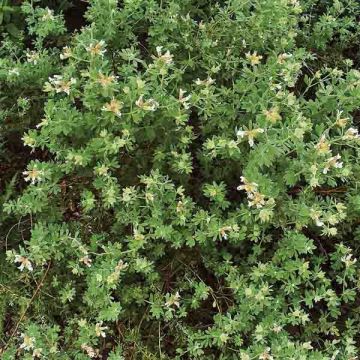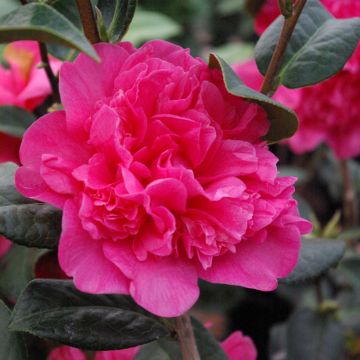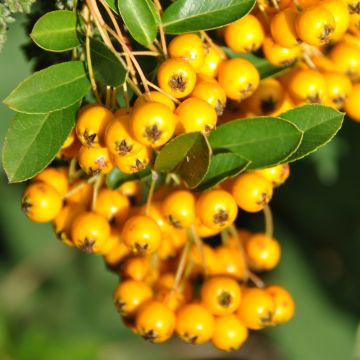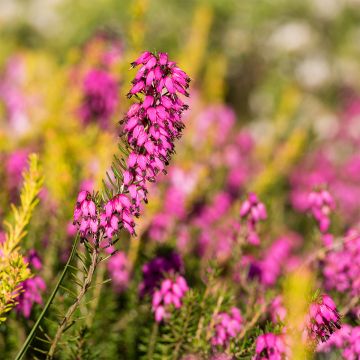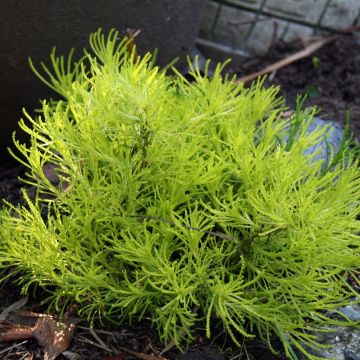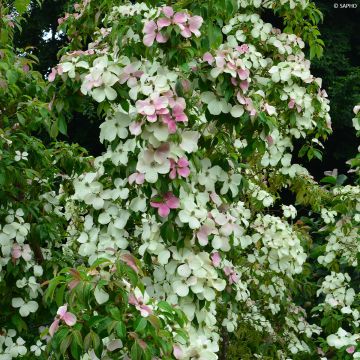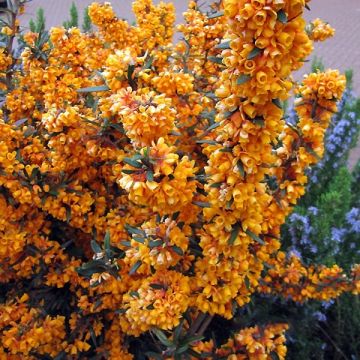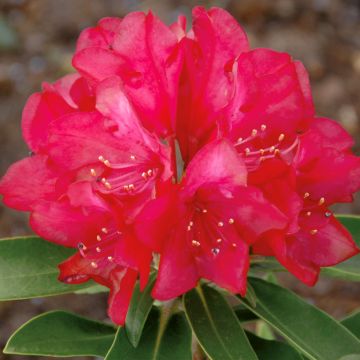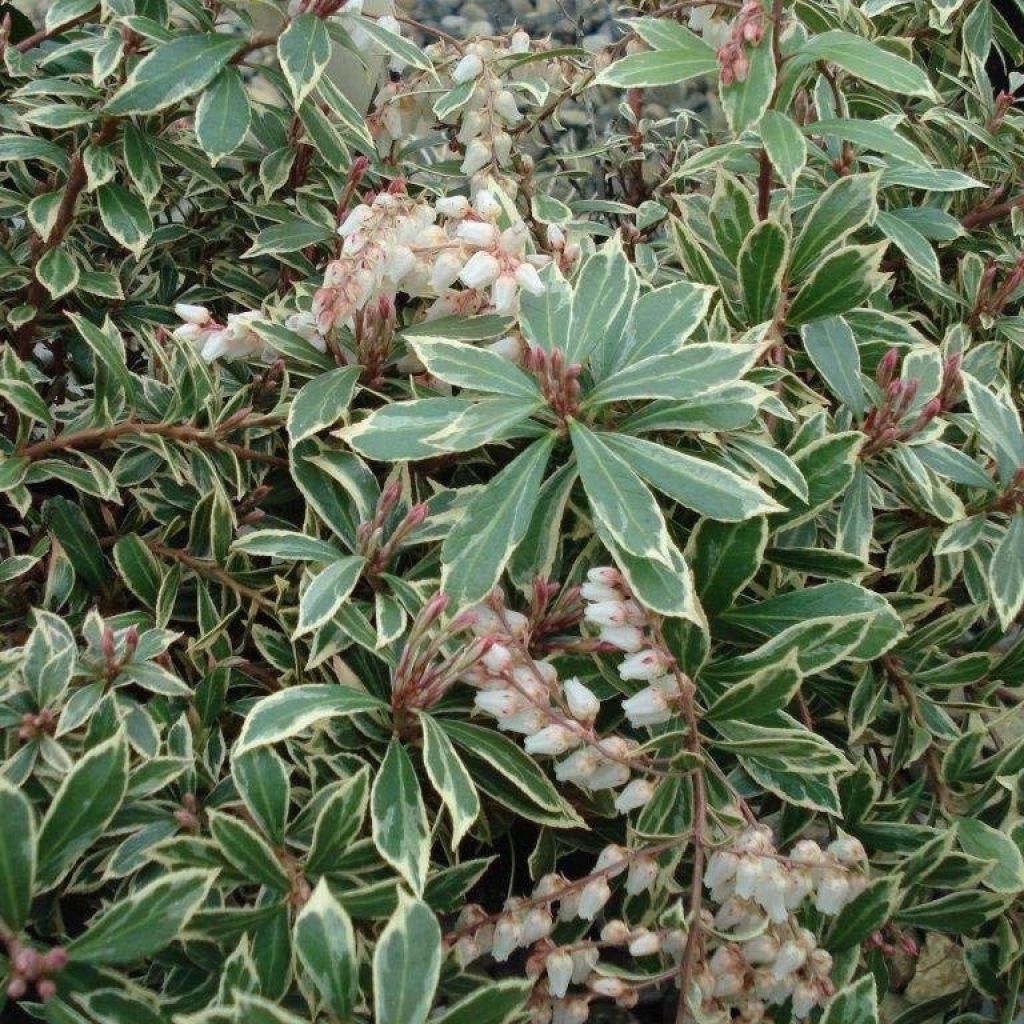

Pieris japonica Little Heath Variegata - Japanese Andromeda
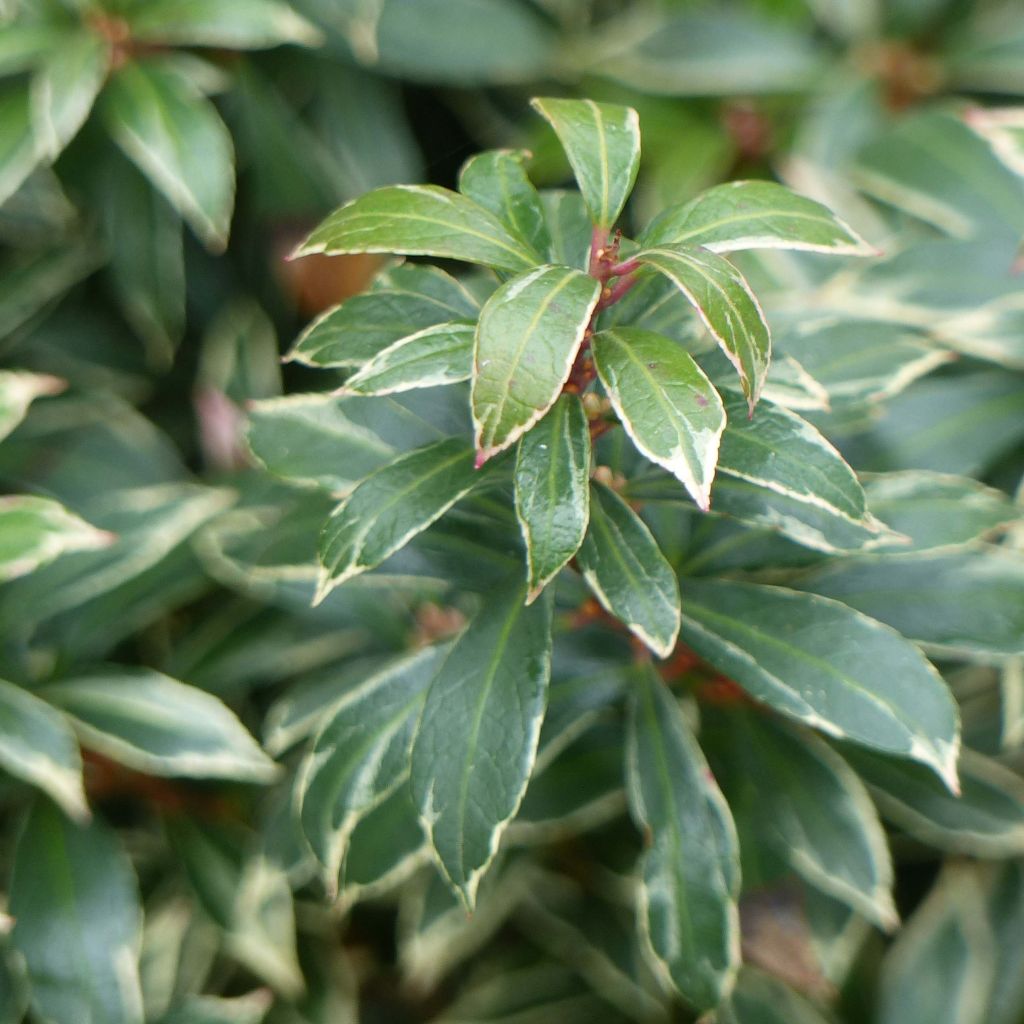

Pieris japonica Little Heath Variegata - Japanese Andromeda
Pieris japonica Little Heath Variegata - Japanese Andromeda
Pieris japonica Little Heath Variegata
Japanese Andromeda, Japanese Pieris, Lily-of-the-Valley Bush
When I opened the box, I exclaimed "Wow!" because the young plant is absolutely stunning with its coppery pink shoots and its variegated green and white foliage. I already have a few periwinkles in my garden, but this one is truly beautiful with its small leaves and its extremely dense and rounded habit, perfect for small spaces. A real ornamental gem, in my opinion.
Béatrice, 09/04/2021
This plant carries a 24 months recovery warranty
More information
We guarantee the quality of our plants for a full growing cycle, and will replace at our expense any plant that fails to recover under normal climatic and planting conditions.
From €5.90 for pickup delivery and €6.90 for home delivery
Express home delivery from €8.90.
Does this plant fit my garden?
Set up your Plantfit profile →
Description
The Pieris japonica Little Heath Variegata is a small, colourful and decorative variety of Japanese andromeda, well-suited for small spaces and container gardening. The bush charms with its delicately white-edged foliage, which persists throughout winter, its young shoots displaying beautiful shades of red and coppery pink, its light pink floral buds, decorative from December onwards, and its spring flowering in clusters of cream-white bell-shaped flowers. This cultivar does not require pruning and requires little maintenance.
The 'Little Heath Variegata' Japanese andromeda is a British horticultural creation credited to P. Foley of Little Heath Nursery, dating back to 1967. It is derived from the Pieris japonica, a species native to eastern China, Japan, and Taiwan. This plant belongs to the ericaceae family, and is a cousin of heathers and camellias with which it forms beautiful mass plantings. Its foliage persists throughout winter.
The 'Little Heath Variegata' cultivar, which is very bushy, has a compact and rounded habit. Its growth is rather slow, eventually forming a bush measuring about 60 cm (23.6 in) in height and 50 cm (19.7 in) in width. It has beautiful foliage composed of long, slender, lanceolate and pointed leaves, slightly dentate along the edges, measuring up to 8 cm (3.1 in) in length. The young shoots are red to coppery pink, unfolding into white-edged leaves on a light green background that turns olive green. The clusters of tender pink floral buds appear in December, enhancing the decorative effect of this Japanese andromeda during the dull season. From February to April, depending on the climate, they open up into upright clusters, 10 cm (3.9 in) long, composed of small urn-shaped flowers, creamy-white in colour, resembling lily of the valley flowers. The flowers are fragrant with a sweet honey scent and are highly visited by bees.
Pieris japonica are hardy shrubs, preferring acidic and moist soils, as well as partial shade exposure. Due to its compact size and extremely decorative appearance throughout the seasons, this 'Little Heath Variegata' Japanese andromeda is perfectly suited for container gardening on a terrace, patio, or partially shaded balcony. It will also find its place under the canopy of tall trees, along the border of partially shaded shrubs, as a low hedge, in a shaded rock garden, and especially within a heather bed, alongside other acidophilous plants such as Camellias, Rhododendrons, heathers, and mollis or Japanese Azaleas. It will make a statement when paired with spring bulbs (daffodils, early tulips), hellebores, and primroses. It has its rightful place in a Japanese-style garden!
Report an error about the product description
Pieris japonica Little Heath Variegata - Japanese Andromeda in pictures
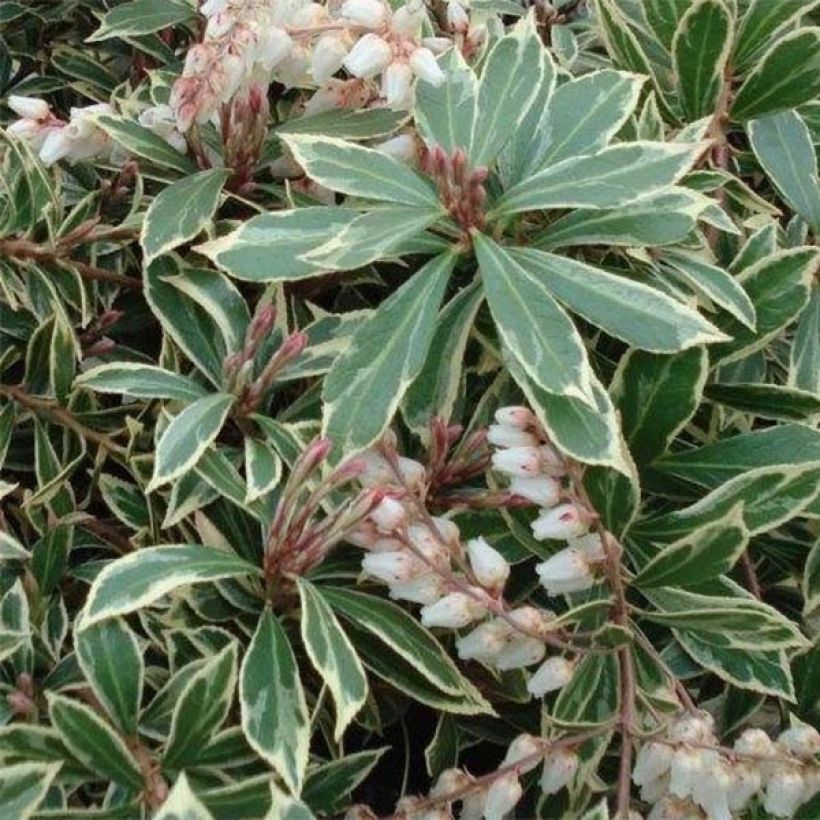

Plant habit
Flowering
Foliage
Botanical data
Pieris
japonica
Little Heath Variegata
Ericaceae
Japanese Andromeda, Japanese Pieris, Lily-of-the-Valley Bush
Cultivar or hybrid
Other Pieris
Planting and care
The Pieris japonica 'Little Heath Variegata' appreciates a semi-shaded exposure or gentle sun, as well as an acidic soil, remaining fresh, light, humus-rich, and well-drained. It has good hardiness and can tolerate temperatures down to -15°C (5 °F) in perfectly drained soil, but its young shoots can be damaged by late frosts. It is advisable to plant it in a sheltered location protected from cold and drying winter winds. Install a thick mulch at its base in autumn, in harsh climates or in situations exposed to winter winds. A thick layer of fern fronds, dead leaves, and pine needles would be ideal. If its young foliage has been damaged by frost, it should be pruned to stimulate the growth of new shoots. Appreciating good humidity, it prefers consistently moist soil but not the stagnant moisture of clay soils. To prevent soil drying out, regular watering with non-calcareous water is necessary, especially during the first year following planting and in the summer. Planting can be done in spring or autumn, in a mixture of garden soil, turf, and heather soil. In spring, it is advisable to surface-dress with heather soil and compost around its roots and possibly apply a slow-release fertilizer in the form of a handful of dried blood. Take care to provide enough space for this Pieris japonica to ensure its proper development, respecting a minimum planting distance of 0.50 cm (0.2 in) around its base. After flowering, remove faded flowers to avoid unnecessarily exhausting the plant by seed production. Also, lightly prune bare branches that compromise the bushy habit of the Pieris japonica.
Planting period
Intended location
Care
-
, onOrder confirmed
Reply from on Promesse de fleurs
Evergreen shrubs
Haven't found what you were looking for?
Hardiness is the lowest winter temperature a plant can endure without suffering serious damage or even dying. However, hardiness is affected by location (a sheltered area, such as a patio), protection (winter cover) and soil type (hardiness is improved by well-drained soil).

Photo Sharing Terms & Conditions
In order to encourage gardeners to interact and share their experiences, Promesse de fleurs offers various media enabling content to be uploaded onto its Site - in particular via the ‘Photo sharing’ module.
The User agrees to refrain from:
- Posting any content that is illegal, prejudicial, insulting, racist, inciteful to hatred, revisionist, contrary to public decency, that infringes on privacy or on the privacy rights of third parties, in particular the publicity rights of persons and goods, intellectual property rights, or the right to privacy.
- Submitting content on behalf of a third party;
- Impersonate the identity of a third party and/or publish any personal information about a third party;
In general, the User undertakes to refrain from any unethical behaviour.
All Content (in particular text, comments, files, images, photos, videos, creative works, etc.), which may be subject to property or intellectual property rights, image or other private rights, shall remain the property of the User, subject to the limited rights granted by the terms of the licence granted by Promesse de fleurs as stated below. Users are at liberty to publish or not to publish such Content on the Site, notably via the ‘Photo Sharing’ facility, and accept that this Content shall be made public and freely accessible, notably on the Internet.
Users further acknowledge, undertake to have ,and guarantee that they hold all necessary rights and permissions to publish such material on the Site, in particular with regard to the legislation in force pertaining to any privacy, property, intellectual property, image, or contractual rights, or rights of any other nature. By publishing such Content on the Site, Users acknowledge accepting full liability as publishers of the Content within the meaning of the law, and grant Promesse de fleurs, free of charge, an inclusive, worldwide licence for the said Content for the entire duration of its publication, including all reproduction, representation, up/downloading, displaying, performing, transmission, and storage rights.
Users also grant permission for their name to be linked to the Content and accept that this link may not always be made available.
By engaging in posting material, Users consent to their Content becoming automatically accessible on the Internet, in particular on other sites and/or blogs and/or web pages of the Promesse de fleurs site, including in particular social pages and the Promesse de fleurs catalogue.
Users may secure the removal of entrusted content free of charge by issuing a simple request via our contact form.
The flowering period indicated on our website applies to countries and regions located in USDA zone 8 (France, the United Kingdom, Ireland, the Netherlands, etc.)
It will vary according to where you live:
- In zones 9 to 10 (Italy, Spain, Greece, etc.), flowering will occur about 2 to 4 weeks earlier.
- In zones 6 to 7 (Germany, Poland, Slovenia, and lower mountainous regions), flowering will be delayed by 2 to 3 weeks.
- In zone 5 (Central Europe, Scandinavia), blooming will be delayed by 3 to 5 weeks.
In temperate climates, pruning of spring-flowering shrubs (forsythia, spireas, etc.) should be done just after flowering.
Pruning of summer-flowering shrubs (Indian Lilac, Perovskia, etc.) can be done in winter or spring.
In cold regions as well as with frost-sensitive plants, avoid pruning too early when severe frosts may still occur.
The planting period indicated on our website applies to countries and regions located in USDA zone 8 (France, United Kingdom, Ireland, Netherlands).
It will vary according to where you live:
- In Mediterranean zones (Marseille, Madrid, Milan, etc.), autumn and winter are the best planting periods.
- In continental zones (Strasbourg, Munich, Vienna, etc.), delay planting by 2 to 3 weeks in spring and bring it forward by 2 to 4 weeks in autumn.
- In mountainous regions (the Alps, Pyrenees, Carpathians, etc.), it is best to plant in late spring (May-June) or late summer (August-September).
The harvesting period indicated on our website applies to countries and regions in USDA zone 8 (France, England, Ireland, the Netherlands).
In colder areas (Scandinavia, Poland, Austria...) fruit and vegetable harvests are likely to be delayed by 3-4 weeks.
In warmer areas (Italy, Spain, Greece, etc.), harvesting will probably take place earlier, depending on weather conditions.
The sowing periods indicated on our website apply to countries and regions within USDA Zone 8 (France, UK, Ireland, Netherlands).
In colder areas (Scandinavia, Poland, Austria...), delay any outdoor sowing by 3-4 weeks, or sow under glass.
In warmer climes (Italy, Spain, Greece, etc.), bring outdoor sowing forward by a few weeks.

































